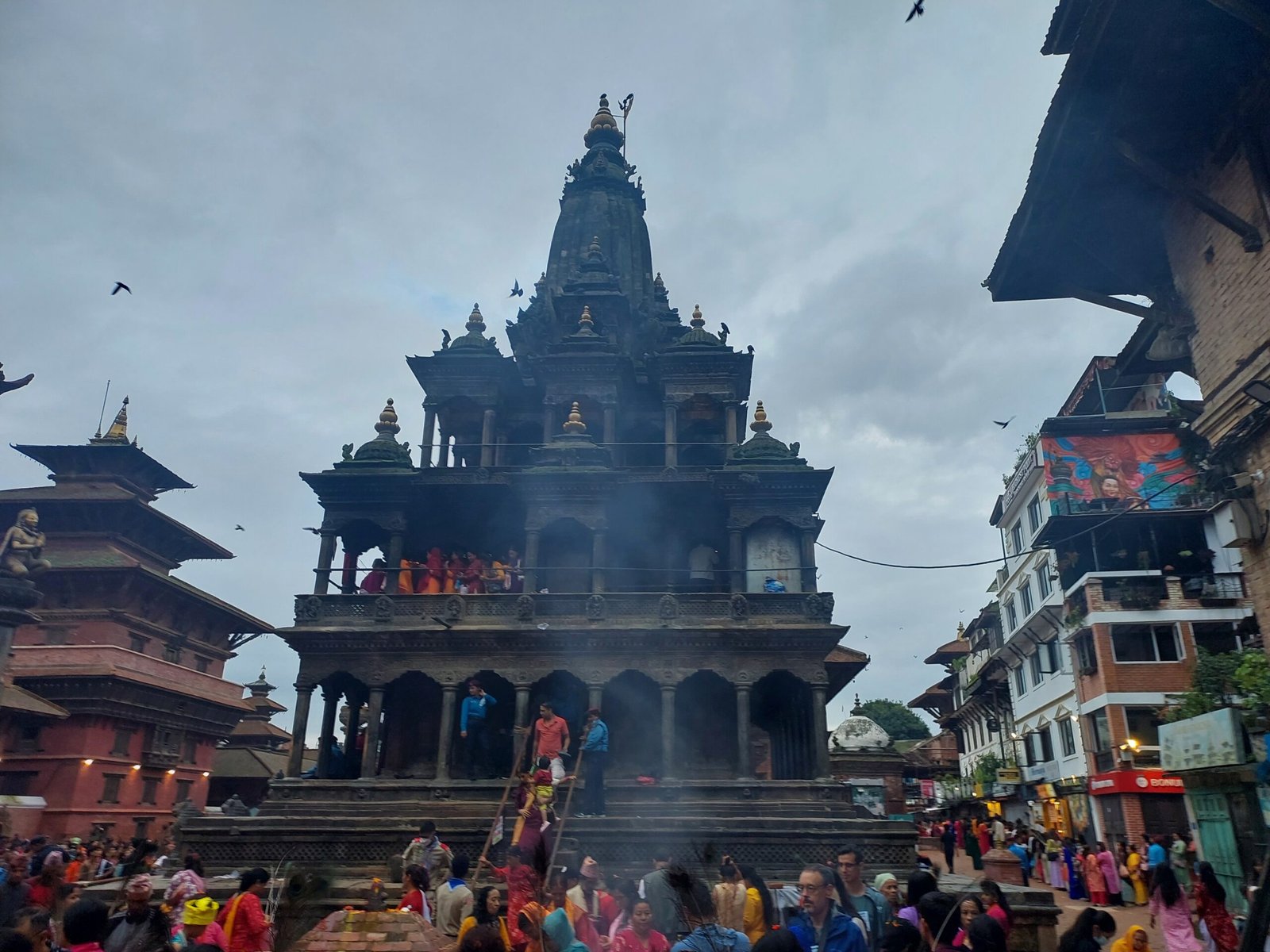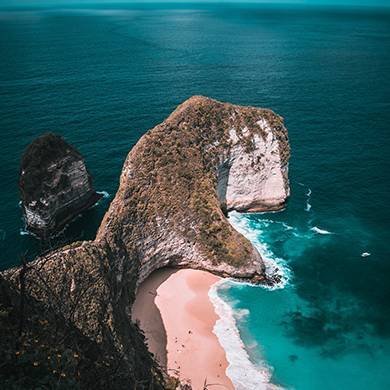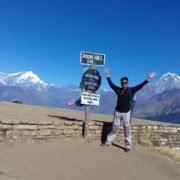
Krishna Janmashtami Festival in Nepal – Celebrating Culture, Religion, and Heritage with Mountain King Treks
The Krishna Janmashtami Festival in Nepal is one of the most cherished religious and cultural celebrations, uniting devotees across the country in honor of Lord Krishna’s birth. Known as the divine eighth avatar of Lord Vishnu, Krishna symbolizes love, wisdom, and righteousness, and his birthday is observed with immense devotion and grandeur. Every year, temples and households glow with lights, hymns, and prayers, while devotees keep fasts, sing bhajans, and reenact episodes from Lord Krishna’s life.
More than just a festival, Janmashtami represents Nepal’s living culture, religion, and heritage. The event highlights how deeply spiritual traditions are woven into the daily lives of Nepali people, reflecting the pride and identity of the nation. Among all celebrations, the most vibrant can be witnessed at Krishna Mandir in Patan, a stunning Shikhara-style stone temple that becomes the heart of the festivities. Alongside Patan, the temples at Kathmandu Durbar Square, Bhaktapur Durbar Square, and Kirtipur Durbar Square also hold immense importance, making the Kathmandu Valley a sacred hub during this auspicious occasion.
For Mountain King Treks, being part of such celebrations is more than just a cultural experience; it is an opportunity to share Nepal’s spiritual essence, timeless architecture, and vibrant heritage with the world.Krishna Janmashtami Festival in Nepal – Celebrating Culture, Religion, and Heritage with Mountain King Treks
The Krishna Janmashtami Festival in Nepal is one of the most cherished religious and cultural celebrations, uniting devotees across the country in honor of Lord Krishna’s birth. Known as the divine eighth avatar of Lord Vishnu, Krishna symbolizes love, wisdom, and righteousness, and his birthday is observed with immense devotion and grandeur. Every year, temples and households glow with oil lamps, colorful decorations, and intricate floral arrangements. Devotees keep fasts, sing bhajans, recite scriptures, and reenact episodes from Lord Krishna’s life, creating a lively, spiritual, and joyful atmosphere throughout the nation.
More than just a festival, Janmashtami represents Nepal’s living culture, religion, and heritage. It highlights how deeply spiritual traditions are interwoven into the daily lives of Nepali people, reflecting the pride, identity, and continuity of Nepalese culture. During this time, communities organize cultural programs, traditional dances, and storytelling sessions that depict the playful and divine acts of Krishna, fostering both devotion and social cohesion.
Among all celebrations, the most vibrant can be witnessed at Krishna Mandir in Patan, a magnificent Shikhara-style stone temple constructed in 1637 AD, which becomes the heart of the festivities. Here, the temple courtyard overflows with devotees who offer prayers, perform ritual aartis, and sing devotional songs, while musicians and performers reenact episodes from Krishna’s life, capturing the essence of Nepali spirituality. Alongside Patan, the temples at Kathmandu Durbar Square and Bhaktapur Durbar Square are also central to the celebrations, drawing large crowds and reflecting centuries-old traditions.
Across Nepal, from Biratnagar, Dharan, and Pokhara to Janakpur, Chitwan, Hetauda, Tansen, Palpa, Butwal, and Nepalgunj, Krishna temples become focal points for worship and festivity. Smaller towns and village shrines also organize local rituals, community prayers, and cultural performances, allowing everyone, from children to elders, to participate in the joyous occasion. This nationwide celebration demonstrates the widespread devotion to Lord Krishna and the rich diversity of Nepalese cultural practices.
For Mountain King Treks, participating in these festivals is more than a cultural experience; it is an opportunity to share Nepal’s spiritual essence, heritage architecture, and vibrant traditions with travelers from around the world. By combining trekking adventures with visits to sacred temples and festival experiences, Mountain King Treks offers a holistic journey that connects adventurers with both the majestic Himalayas and the deeply rooted cultural and religious life of Nepal.
Cultural and Religious Significance of Janmashtami
The Krishna Janmashtami Festival in Nepal is much more than the celebration of Lord Krishna’s birth; it is a vibrant tapestry of religion, culture, and national heritage, reflecting the deep-rooted devotion of the Nepali people. Across the country, from bustling cities to small villages, devotees gather at temples to perform rituals, chant mantras, sing bhajans, and engage in community festivities, keeping centuries-old traditions alive.
Janmashtami is particularly significant in preserving Nepal’s spiritual heritage. Temples become centers of devotion and cultural exchange, where generations come together to honor Krishna’s teachings of love, wisdom, and righteousness. The Krishna Mandir in Patan, constructed in 1637 AD in the grand Shikhara-style stone architecture, is a focal point for pilgrims and tourists alike. Its intricately carved stone sculptures depict episodes from Krishna’s life, providing not only spiritual inspiration but also a glimpse into Nepalese artistry and architectural mastery.
Similarly, the temples at Kathmandu Durbar Square and Bhaktapur Durbar Square host vibrant rituals, including ceremonial aartis, devotional music, and storytelling sessions, which engage devotees in spiritual reflection while celebrating the joy of Krishna’s birth. Communities decorate temples and surrounding courtyards with flowers, oil lamps, and colorful banners, creating a festive atmosphere that blends devotion, artistry, and cultural pride.
Beyond the Kathmandu Valley, Janmashtami is celebrated in major cities and towns across Nepal, including Biratnagar, Dharan, Pokhara, Janakpur, Chitwan, Hetauda, Tansen, Palpa, Butwal, and Nepalgunj. In each region, temples and shrines host processions, musical performances, and reenactments of Krishna’s childhood acts, bringing communities together and highlighting the diversity of Nepalese cultural practices. Even small villages join in, making the festival a truly nationwide celebration that unites people across all regions, social backgrounds, and ages.
Observing Janmashtami allows locals and visitors to immerse themselves in Nepal’s religious ceremonies, cultural heritage, and joyous spirit. From the rhythmic chanting of mantras and the devotional songs echoing through temple courtyards to the vibrant decorations and traditional dances, the festival offers a unique opportunity to witness Nepal’s spiritual richness, communal harmony, and artistic legacy. For travelers with Mountain King Treks, experiencing Janmashtami in Nepal provides not only spiritual insight but also a deep cultural connection that makes the journey unforgettable.
Major Krishna Temples in Kathmandu Valley
The Kathmandu Valley is home to numerous Krishna temples, each carrying historical, architectural, and spiritual significance. Among these, three stand out as the most important pilgrimage sites during the Krishna Janmashtami Festival in Nepal, attracting devotees and tourists from across the country and abroad.
Krishna Mandir in Patan is the crown jewel, renowned for its Shikhara-style stone architecture, intricate carvings, and grand celebrations. Constructed in 1637 AD by King Siddhi Narsingh Malla following a divine dream, the temple features three tiers, 21 golden pinnacles, and stone sculptures depicting Krishna’s life and other Hindu deities. During Janmashtami, thousands of devotees gather here for prayers, bhajans, aartis, and dramatic reenactments of Krishna’s childhood episodes, creating a spiritually vibrant atmosphere.
Other notable temples in the valley include the Krishna Temple at Kathmandu Durbar Square and the Krishna Temple at Bhaktapur Durbar Square. These temples host elaborate rituals, processions, and devotional performances during Janmashtami, emphasizing the region’s rich religious and cultural traditions. Courtyards and streets surrounding these temples are beautifully decorated with oil lamps, colorful banners, and flowers, creating a festive ambiance that draws locals and visitors alike.
Beyond the Kathmandu Valley, smaller Krishna temples across Nepal, in cities such as Pokhara, Biratnagar, Dharan, Janakpur, Chitwan, and Nepalgunj, also celebrate Janmashtami with local rituals and cultural performances. This nationwide reverence for Lord Krishna underscores the enduring spiritual and cultural heritage of Nepal, making Janmashtami one of the most celebrated and unifying festivals in the country.
Krishna Mandir in Patan – Shikhara Architecture Masterpiece
Krishna Mandir in Patan is the most iconic Krishna temple in Nepal, celebrated not only for its religious significance but also for its remarkable Shikhara-style stone architecture. Constructed entirely from stone, the temple was built in 1637 AD by King Siddhi Narsingh Malla after he reportedly had a divine dream in 1620, where he saw Lord Krishna and Radha standing in front of his palace. Inspired by this vision, the king commissioned the temple, which was completed 17 years later, becoming a lasting symbol of devotion and architectural excellence.
The temple’s three-tiered structure with 21 golden pinnacles rises gracefully above the courtyard, while intricately carved stone sculptures depict scenes from Krishna’s life, various Hindu deities, and sacred symbols. Its Shikhara-style spire and detailed stonework reflect the pinnacle of Malla-period craftsmanship, making the temple not only a religious site but also a masterpiece of Nepalese architectural heritage.
During the Krishna Janmashtami Festival in Nepal, Krishna Mandir becomes the heart of national celebrations. Devotees from across the country gather to perform ritual prayers, bhajans, aartis, and ceremonial offerings, while musicians and performers reenact episodes from Krishna’s childhood and divine acts. The temple is beautifully illuminated with oil lamps, adorned with flowers, and decorated with colorful banners, creating a spiritually vibrant and festive atmosphere. The celebrations here combine devotion, artistry, and community spirit, making the experience unforgettable for both locals and tourists.
The temple’s unique blend of legend, historical craftsmanship, and religious devotion makes it a must-visit site for anyone seeking to experience Nepal’s cultural richness, spiritual traditions, and festive grandeur. It stands as a testament to the enduring faith of the Nepali people and the artistic legacy of the Malla kings.
Krishna Temple at Kathmandu Durbar Square
The Krishna Temple at Kathmandu Durbar Square is one of the most historic and revered sites in the heart of Nepal’s capital. Believed to have been constructed in the 17th century, this temple exemplifies traditional Nepalese pagoda-style architecture, featuring beautifully carved wooden struts, intricately tiered roofs, and a serene stone courtyard that welcomes devotees and visitors alike. The walls and pillars are adorned with carvings depicting scenes from Lord Krishna’s life, along with other Hindu deities, making the temple both a spiritual sanctuary and an artistic masterpiece.
Local legends say that the temple was built to honor the divine presence of Krishna and to serve as a center of devotion for the royal family and the people of Kathmandu. Its stone statues and decorative elements reflect the craftsmanship of the Malla period, showcasing Nepal’s unique ability to blend religious symbolism with architectural elegance.
During the Krishna Janmashtami Festival in Nepal, the temple transforms into a vibrant hub of devotion and celebration. Devotees from across the city and beyond gather to perform ritual prayers, sing bhajans, and light oil lamps, while the courtyard and surrounding streets are adorned with colorful decorations and flowers. Cultural programs, including musical performances and storytelling sessions, recreate episodes from Krishna’s childhood and divine acts, engaging both locals and tourists in a spiritually uplifting experience.
The festival at Kathmandu Durbar Square demonstrates the fusion of religious devotion and Nepalese cultural heritage, making it a must-visit site for those seeking to experience the grandeur of Janmashtami. Beyond its religious significance, the temple provides visitors with a chance to appreciate the rich architectural history, artistic craftsmanship, and communal spirit that define the Kathmandu Valley.
Krishna Temple at Bhaktapur Durbar Square
The Krishna Temple at Bhaktapur Durbar Square is a historic and revered landmark, renowned for its stone architecture and exquisite wood carvings. Built during the Malla period, this temple may be smaller than Patan’s Krishna Mandir, but it holds deep spiritual, cultural, and historical importance. Its intricately carved stone sculptures depict episodes from Lord Krishna’s life, providing devotees with a visual journey through his divine stories. The craftsmanship reflects Bhaktapur’s rich tradition of temple architecture, combining religious symbolism with artistic excellence.
During the Krishna Janmashtami Festival in Nepal, Bhaktapur transforms into a vibrant hub of devotion and celebration. Devotees from across the valley and nearby regions gather at the temple to perform ritual prayers, sing bhajans, and participate in ceremonial offerings. The temple courtyard is beautifully adorned with flowers, oil lamps, and colorful decorations, while local cultural performances, traditional dances, and storytelling sessions reenact Krishna’s divine acts. This creates a lively yet deeply spiritual ambiance, reflecting both communal devotion and the city’s proud heritage.
Beyond Bhaktapur, Janmashtami celebrations spread across major cities and towns in Nepal, including Kathmandu, Patan, Pokhara, Biratnagar, Dharan, Janakpur, Chitwan, and Nepalgunj. Each city adds its local flavor, from processions and musical performances to elaborate decorations and public feasts, highlighting the nationwide reverence for Lord Krishna and the cultural diversity of Nepal.
Visiting the Krishna Temple at Bhaktapur Durbar Square during Janmashtami allows one to experience Nepal’s rich religious traditions, architectural mastery, and the joyous spirit of the festival, making it an unmissable destination for devotees, tourists, and cultural enthusiasts alike.
Celebrating Janmashtami Across Nepal – Regional Festivals and Temples
While the Kathmandu Valley hosts the most iconic Krishna temples, the Krishna Janmashtami Festival in Nepal is celebrated with equal devotion across the country. Major cities like Biratnagar, Dharan, Pokhara, Janakpur, Chitwan, Hetauda, Tansen, Palpa, Butwal, and Nepalgunj each have important Krishna temples that become focal points of festivities.
In Biratnagar and Dharan, devotees gather at local Krishna temples to perform rituals, sing bhajans, and participate in communal fasting, creating lively and colorful celebrations. Pokhara’s Krishna Mandir hosts cultural programs and devotional events that attract locals and tourists alike. Janakpur, known for its Ramayana heritage, celebrates Janmashtami with unique rituals, combining local traditions with the worship of Lord Krishna. In towns like Chitwan, Hetauda, Tansen, Palpa, and Butwal, smaller Krishna shrines organize processions, reenactments of Krishna’s life stories, and ceremonial aartis, reflecting the deep-rooted spiritual and cultural practices of each region.
Even in remote villages across the Terai, hills, and far-western regions, Krishna temples serve as community hubs during Janmashtami, emphasizing Nepal’s nationwide reverence for Lord Krishna. Travelers visiting these regions witness a diverse range of rituals, local customs, and festive celebrations, offering an authentic insight into the country’s religious heritage and cultural richness.
Festive Celebration at Krishna Mandir Patan
The Krishna Mandir in Patan stands as the epicenter of the Krishna Janmashtami Festival in Nepal, drawing thousands of devotees, pilgrims, and tourists every year. During the festival, the temple is adorned with colorful lights, decorative flowers, oil lamps, and ceremonial banners, creating a mesmerizing spiritual ambiance that highlights the intricate beauty of its Shikhara-style stone architecture. Under the festive glow, the temple’s detailed carvings and three-tiered spire appear even more majestic, showcasing Nepal’s artistic and architectural heritage.
Devotees gather from the early hours to perform rituals, prayers, and bhajans, many observing fasts in honor of Lord Krishna’s birth. The temple courtyard becomes a lively hub where ceremonial aartis, chanting sessions, and recitations of Krishna’s life stories take place throughout the day. Musicians play traditional instruments while performers enact episodes from Krishna’s childhood, including his playful acts with the gopis and divine miracles, bringing the legends vividly to life.
The celebrations also reflect a strong sense of community and devotion, as families, local artisans, and temple priests come together to organize cultural programs, prepare offerings, and guide visitors through rituals. The festival is further enriched by street processions, devotional singing, and storytelling, which engage both young and old, creating a joyous and inclusive atmosphere.
For visitors exploring Nepal with Mountain King Treks, attending Janmashtami at Krishna Mandir Patan offers a unique opportunity to witness the fusion of religion, art, and community spirit. It provides an authentic glimpse into Nepal’s vibrant traditions, deep religious devotion, and festive grandeur, making the experience unforgettable for anyone seeking to connect with the spiritual and cultural heart of the country.
Why Mountain King Treks Values Nepal’s Cultural Festivals
At Mountain King Treks, recognized as one of the best trekking agencies in Nepal, we believe that exploring the Himalayas is not just about walking along trails — it is about connecting with Nepal’s living culture and spirituality. Festivals like Krishna Janmashtami offer travelers a unique chance to experience the devotion, music, and joyous celebration that fill the streets and temples during this sacred occasion, turning every visit into a truly lifetime memory.
Our team guides visitors through sacred sites such as Krishna Mandir in Patan, Krishna Temple at Kathmandu Durbar Square, and other important shrines, ensuring that travelers not only observe the rituals but also understand and respect their meaning, following the true spirit of Atithi Devo Bhava — “The guest is God.”
With Govinda Prasad Sapkota’s 35+ years of experience in cultural and spiritual tourism, Mountain King Treks has developed a reputation for creating immersive cultural tours that complement our treks. Whether it’s listening to the chanting of bhajans during Janmashtami night, admiring the intricate temple architecture, or sharing traditional prasad with local devotees, we offer experiences that are authentic, meaningful, and unforgettable.
By blending adventure trekking with deep cultural immersion, we create journeys that are not only physically rewarding but also spiritually enriching, giving travelers a holistic way to discover Nepal’s timeless heritage.
Connect With Mountain King Treks – Your Gateway to Nepal’s Festivals and Adventures
Experience Lifetime Pleasure – Celebrate Nepal’s Culture & Conquer the Himalayas.
Contact Us
Mountain King Treks And Expedition Pvt. Ltd.
Maitrinagar, Kirtipur – 2, Kathmandu, Nepal
🌐 Website: www.mountainkingtrek.com
📧 Email: mountainkingtreks@gmail.com
📱 WhatsApp / Viber: +977-9841566449
Recent Posts
Poon Hill Trek – Short and Scenic Sunrise Trek in the Annapurna Region with Mountain King Treks
How to Stay Safe and Healthy While Trekking in Nepal
The Four Narayan Temples in Four Directions Protecting Kathmandu Valley

Thailand

